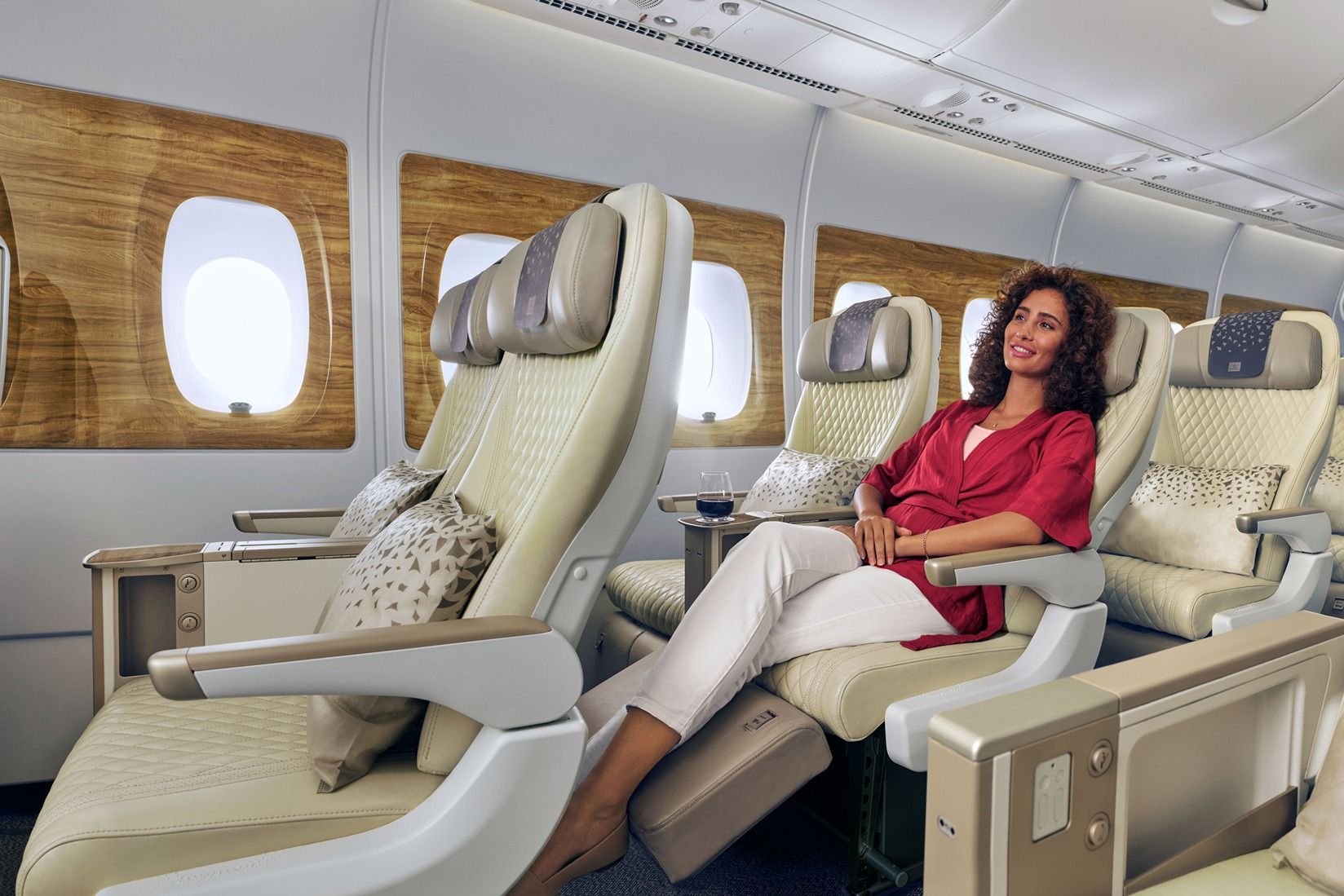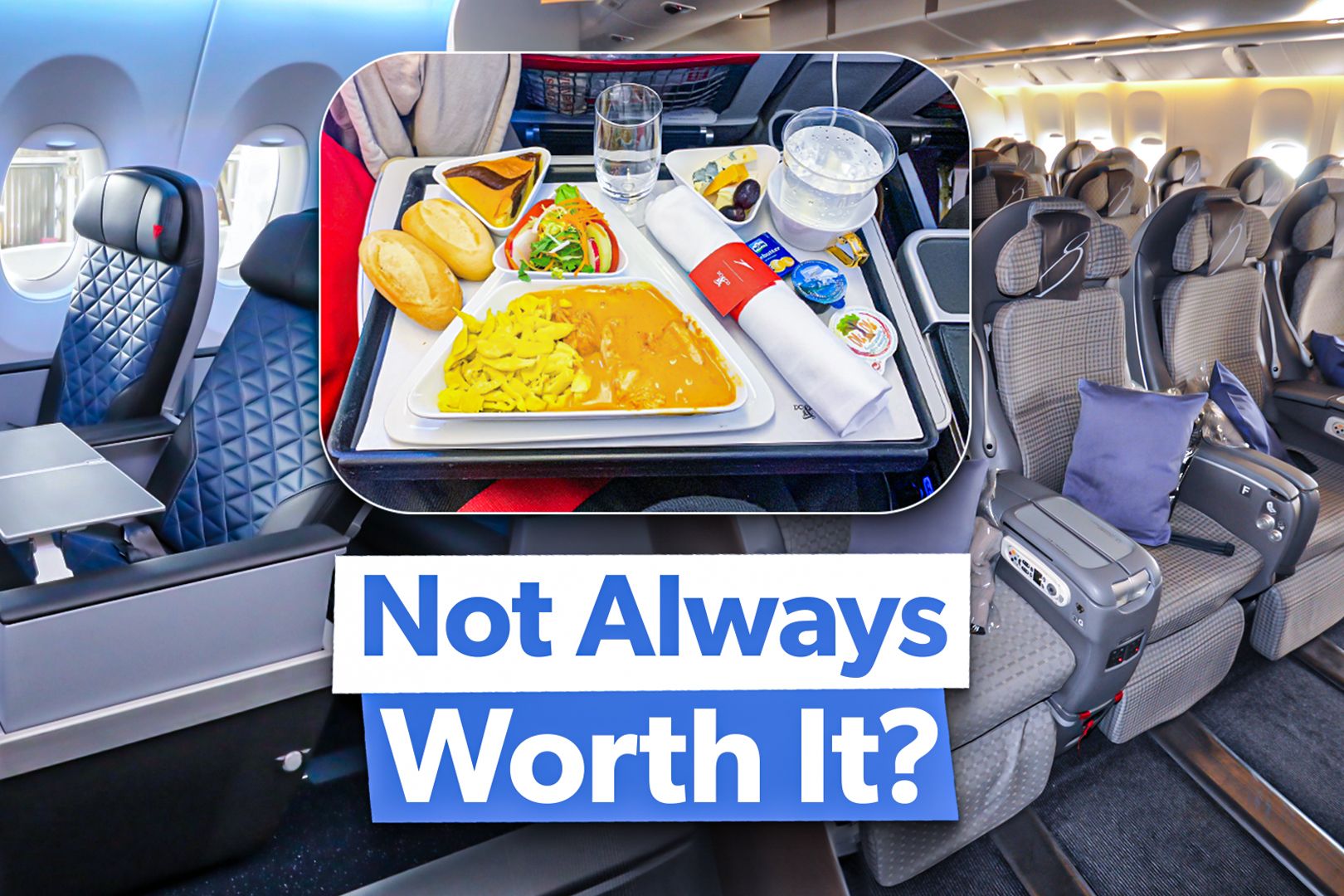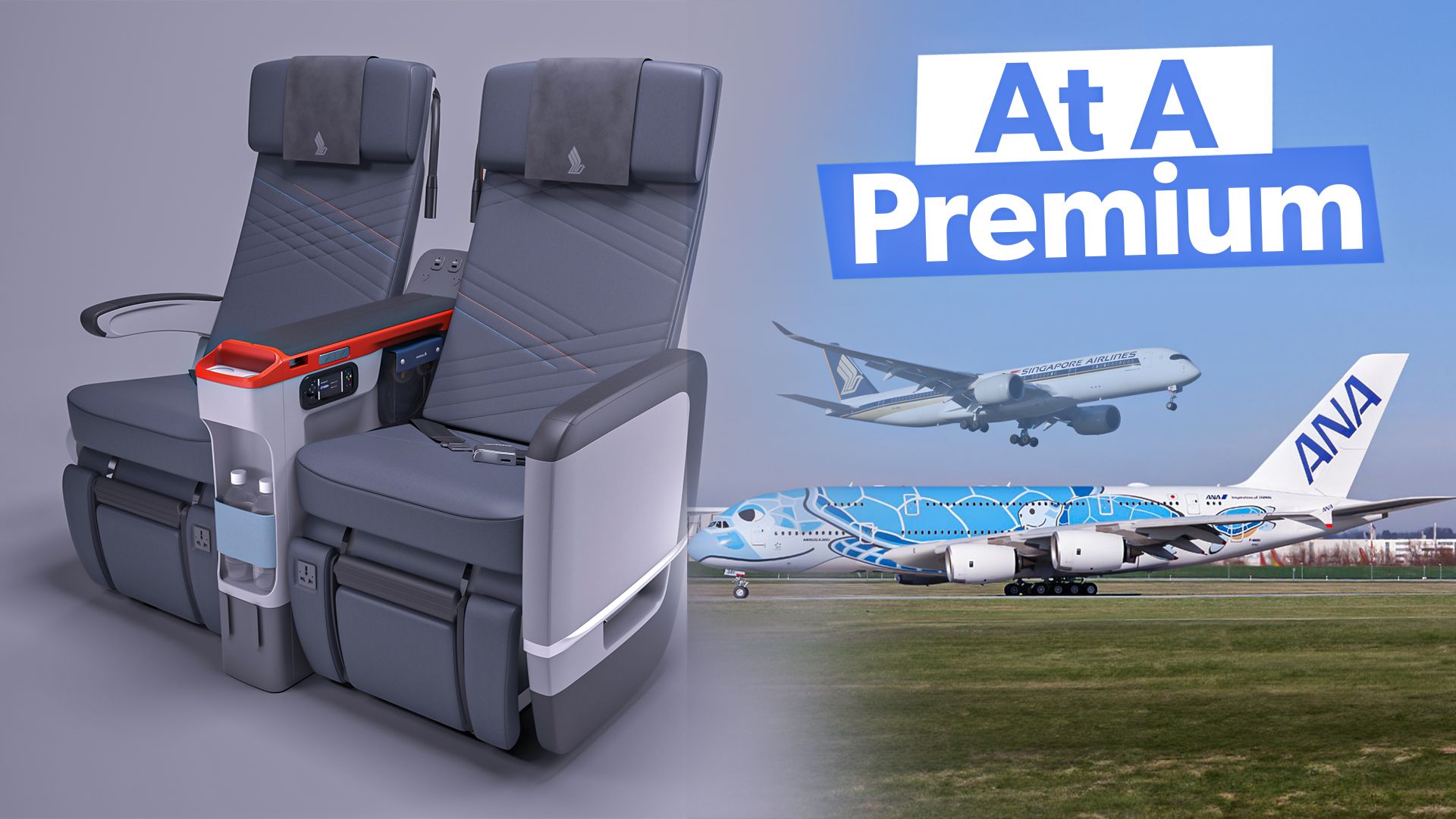Summary
- Premium economy offers benefits like upgraded seats, improved entertainment, and lounge access.
- Airlines like Singapore, ANA, and Atlas Air provide some of the largest premium cabins.
- The rise of premium economy is driven by passengers valuing more space and better service on long-haul flights.
When traveling long-haul, many of us can only dream of what it feels like to sit at the front of the aircraft sipping champagne. However, there is a growing trend of everyday passengers splurging for premium economy on their next trip.
The experience varies between airlines. However, it is positioned between economy and business class and can usually be around double the price (or just short of that) of an economy class ticket.
Taiwan’s EVA Air was the first airline to introduce such a cabin of travel, which was initially called Evergreen Class in 1991. The name Evergreen was soon dropped for Elite and then the standard Premium economy class. The Premium cabin, usually called the ‘W’ class due to its service code, has now been widely acknowledged to carry the standard of what business class used to be several decades ago.
Travelers now seen frequenting premium economy are those of government and middle management companies that require their staff to travel; they are also conscious of their travel budget.
While the inclusions vary between airlines, the most common benefits available for premium economy class passengers include:
- Frequent fliers and full-fare economy class passengers have the potential to be upgraded
- A separate cabin from the regular economy has wider seats and improved headrests. Usually, a footrest is also included, and a dedicated cabin crew
- Improved inflight entertainment, with larger seat-back televisions and noise-canceling headphones
- Airline lounge access
- Priority check-in and boarding
- Faster airline miles earning rate and better re-booking flexibilities
- Exclusive amenity kits and hot towel service
- Welcome drinks, including champagne, and improved meal services are usually served on ceramic dinnerware
- Increased luggage allowance

Related
5 Of The Best Premium Economy Products In The World In 2024
These five airlines offer the best premium economy product in the skies today.
While not featured in this list, Japan Airlines does have 94 W-class seats. However, these are sold as domestic business class, with a seat pitch of 38.1 inches and a width of 18.7 inches
Suppose you’re planning your next trip abroad and looking to book premium economy. According to ch-Aviation, your best chances are with these airlines, which offer the most seats per premium cabin.
1
Singapore Airlines
Airbus A350-900ULR
Six Singapore Airlines aircraft are fitted with 94 premium economy seats. These aircraft were designed for the airline’s ultra-long-haul services, connecting Singapore to New York (Newark and John F. Kennedy Airport).
The airline connects Singapore to the Big Apple daily on these services, which remain the longest direct flights in the world. Sitting back to relax on these services is easier with calf and footrests built into your seat, elevated dining, and plenty of USB charging points to keep all your devices fully charged.
2
All Nippon Airways
Airbus A380-800
This Star Alliance member offers 73 premium economy class seats on double-decker flights. The airline utilizes these aircraft to connect Japan and Hawaii and offers a spacious 38-inch seat, leg rest, 15.6-inch touch-panel screen, a 90-degree swiveling tray table, and a six-way adjustable headrest.
3
Atlas Air
Boeing 747-400
Two of Atlas Air’s 747-400 HD aircraft have a unique (however dated) premium economy class cabin. With 66 seats available, it is the third highest premium economy class seats onboard commercial aircraft. The premium economy cabin is located upstairs and downstairs onboard these queens of the skies.
These aircraft are predominantly on an ACMI (Aircraft, Crew, Maintenance, and Insurance) or ‘Wet Lease’ agreement with the United States Air Force. Checking out where the aircraft last few, a look on Flightradar24 shows N481MC, recently operated from Riga, Latvia, to Ramstein, Germany, before touching down in Savanna, Georgia.
4
Eva Air
Boeing 777-300ER
Taipei-based Eva Air has 12 Boeing 777-300ER sees 64 premium economy class seats on offer. It’s one of three configurations the airline operates, with the other two capitalizing on extra standard economy class seats.
State-of-the-art inflight entertainment offers its passengers 11-inch LCD touch screens, which can be enjoyed with noise-canceling headphones. Duty-free shopping is available through your entertainment screen, so you can relax while browsing your next purchase. You can sit comfortably in your seat with a 38-inch long and 19.5-inch wide seat, with more than enough leg room. Mood lighting lets you pick whether to read, watch TV, or sleep in flight.
5
TUI Airways
Boeing 787-9
The world’s largest tourism and airline charter company, TUI, has six Boeing 787-9 Dreamliners with 63 premium economy class seats. Before passengers even get on the plane, some enhanced features include a 25kg baggage allowance, priority bag drop, security fast-track, lounge access at select UK, Irish, and Melbourne Airport (MLB), and priority boarding.
The treats continue once you’re in flight, including a 38-inch seat pitch, wider seats with footrests, and adjustable headrests. While surfing through the options in your seat-back entertainment, noise-canceling headphones will quiet down any noise in the dedicated premium economy cabin, complete with a Rituals amenity kit, pillow, and blanket.
The rise of premium economy can be attributed to a niche of travelers willing to pay more for a slight upgrade. Especially for long-haul flights, the value of having more room to stretch out and some better service, even if not in a fully lie-flat seat, cannot be understated. As a result, airlines across the globe have consistently begun to offer premium economy cabins, which have become quite popular with passengers.

Related
The Other Side: Are There Any Disadvantages To Premium Economy?
An upgrade from economy class to premium economy is an appealing idea, but are there any disadvantages to doing so?

